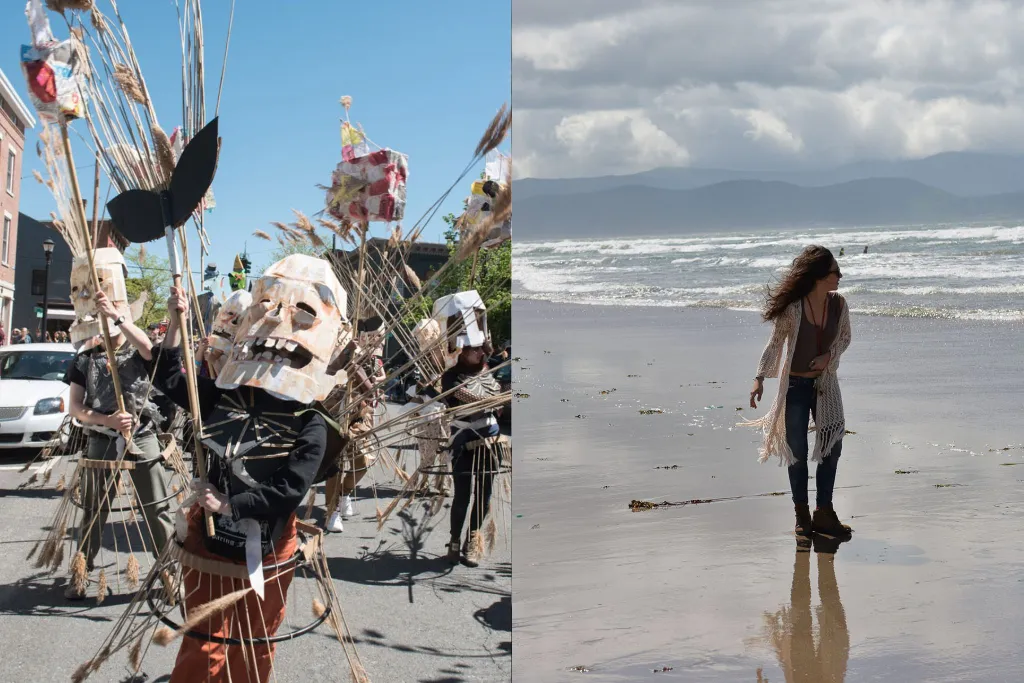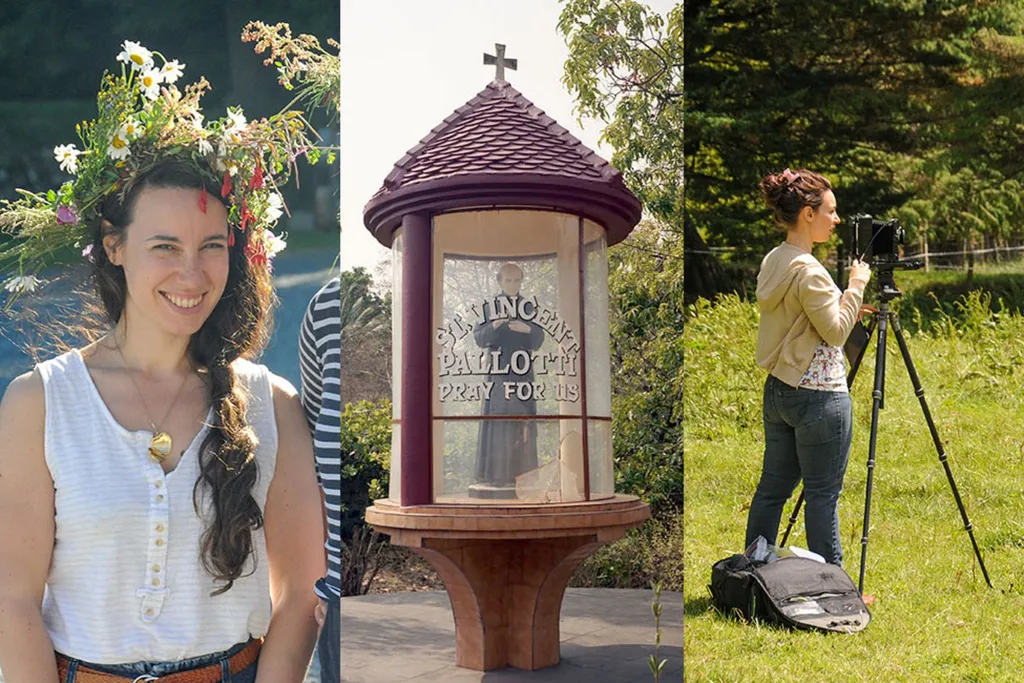Rachel MacFarlane

It has been just over a year since we last caught up with anyone from our fantastic community of artists. Rachel MacFarlane was a visiting artist for our programme Summer Art Program Art on the Farm during the summer of 2012. She is an immensely talented painter, generous spirit and dedicated teacher. She will be completing her MFA in Painting from Rutgers University, Mason Gross School of the Arts this spring and holds a BFA in Drawing and Painting from Ontario College of Art and Design [2008]. Rachel is represented by Nicholas Metivier Gallery in Toronto, ON and her work has featured in several group and solo exhibitions in both North America and Europe.
CHS: You are approaching the end of your MFA study at Rutgers University, Mason Gross School of the Arts. Has this experience, your peers and instructors pushed your work in new directions? In what ways?
RM: Yes, it definitely has expanded my work in new directions. Consistently over the past 4 years I had been working from sculptural models made from refuse and other quotidian materials as reference for painting. Right now, I’m working on sketches of an stop-motion animation that will use these small scale sculptures as the primary material. I’m also taking a break from set-like maquettes as preliminary sketches for painting. Instead I’m working on a series of trompe-l’oeil style paintings that have a closer relationship to the shallow depth of a painting. I’m producing this series while working as an advisor at The Banff Centre. I’m still making physical mock-ups for the paintings but they are actually consisting of mostly painted pieces of mylar collaged together. I’m attempting to translate these painted surfaces into mimetic illusionist paintings. It’s sort of cyclical. I’m trying to deconstruct gesture and also the illusionistic space of a painting at the same time. The dioramic maquettes are now existing for the video work, and possibly as sculptures in themselves. I exhibited some in an exhibition curated by Ben Portis called Broken Colours at Nicholas Metivier Gallery this past July. This is a major shift in the direction of my work but my major interests in mimesis, simulated worlds, material, and propositional narratives still exist as a foundation. At Rutgers I have the time and space to experiment in the studio. I have intelligent and talented peers who I have built significant artistic relationships with who participate in frequent informative critiques. The program is so close to NYC I go usually two days a week to see work, old and new, in person. I’ve been interning for Susanna Heller in Brooklyn, a painter I’ve admired for most of my life who is becoming a significant mentor. Most of all, I feel supported by a variety of faculty, a benefit of an interdisciplinary MFA program that actually facilitates cross-disciplinary learning, and simultaneously feel supported as a painter. This seems to be an unusual balance to achieve and it’s part of the reason I’m so happy with the program.
CHS: As a visiting artist for the summer of 2012 teaching was a large part of your experience at Cow House. When you complete your degree is teaching something you would like to pursue further? What have you learned most from passing on your knowledge of painting?
RM: Teaching at Cow House was the experience that convinced me that I was genuinely interested in teaching as part of my career. There it became more than just an idea of how to possibly support my artistic career but actually became a tangible and wholehearted goal. For me the best part was watching someone grow after spending time with them, I think I’m unique in that I like actually teaching a first year university class because you see the most growth at that level. The students are really sponges for new information and it is easier to get them to work outside of a comfort zone because they don’t really have one yet.
I really want to be able to continue on with teaching after completing my MFA. I will have taught 3 undergraduate courses by the time of my graduation. So far I’ve been enjoying it immensely. I like working with students and feel I have the energy to provide individual attention to each one, an important activity when teaching fine art. I think what I’ve learned most of all from teaching is that when I see students succeed it is usually when they’re encouraged not to fight but instead listen to their instincts. I think this is an important outlook for anyone making work. Sometimes you need to just be the guiding force to get them to actually see what is already there, just tease out the impactful content and get rid of the filler.
CHS: Along with Jess Bloom you co created the website Studio Beat, a website about artists and their studio spaces. By exploring artist’s working environments what insights have you gained into the relationship between their personal working space and their practice and process? Has this project caused you to re-asses your own methods and studio setup?
RM: I wish it had influenced my studio set-up! I’m like a tornado inside of a hurricane. I can’t seem to function without chaos surrounding me. My whole process with building models is through using found materials and manipulating them into forms. With painting I have a very wide palette range, use many mediums, tools and brushes, and I work on multiple paintings at a time. I function best in a very claustrophobic space. However Studio Beat has made me realize that everyone’s space is an element of their work. Someone else might need complete order to work through their ideas, and I need the opposite. Every aspect from when you wake up to how you eat your meals takes an effect on making. Truly artists are very habitual. These spatial and process habits actually lead to a lot of artistic discovery. Usually every artist we speak to has at least one story of a eureka moment that occurs because of an accidental studio discovery.
CHS: What has stayed with you from your time in Ireland? What are your most prominent memories from your time here at Cow House?
RM: This is a very difficult question to answer. I loved my time at Cow House and would love to return in some way in the future. Despite Cow House being in beautiful and picturesque Wexford, and all the trips to historic and awesome sights I actually think that the people was the most memorable part. Rosie and Frank, the rest of their family, the other visiting artists at the studio, and Irish people in general are so warm, intelligent and nurturing that I found that to be what I miss most about the place. As I said earlier I also discovered a great interest in teaching that has had long lasting effects. Green has also become one of my favourite colours lately and I wonder if that too has to do with my fondness of Cow House and Ireland in general.
CHS: You have been spending some recent summers at The Banff Centre in Alberta, Canada. In your view what do residencies large and small offer artists that can be difficult to attain in their own studios?
RM: The Banff Centre and Cow House Studios have a lot of differences but what they have in common I think is the defining benefit of residencies big and small, and that is that they provide space, time and support for artists. What Cow House supplies is a more intimate, hermetic experience set in the beautiful lush rural landscape of Ireland. The Banff Centre is a very large institutionally run artist residency that has many different disciplines running programs at once. It is also set in a beautiful landscape, the Canadian Rocky Mountains, but all of this also supplies more distractions, both social and physical. These distractions can be productive and inspiring so in a way either place provides a slightly different purpose and maybe suits the same people just at different points in their process. I think if you felt pent up and just needed a supportive space to finally get some work done Cow House would be a wonderful and supportive place. If you felt you needed inspiration through social engagement with lots of artists even about a current body of work maybe Banff would be a better option. The important thing is that both offer that essential trifecta – space, time and support.
See Rachels website here https://www.rachelmacfarlane.com/


